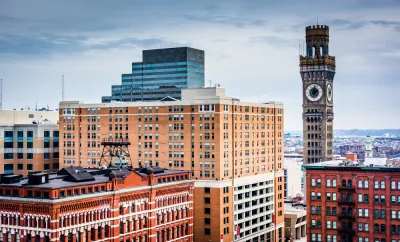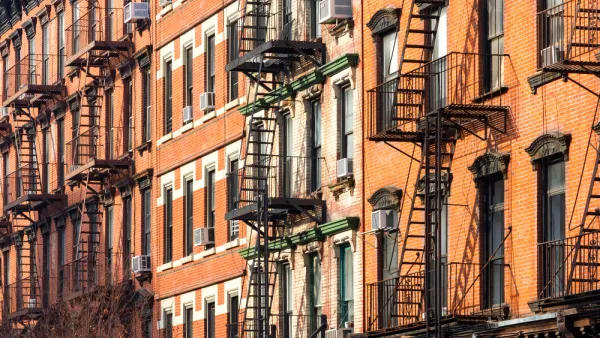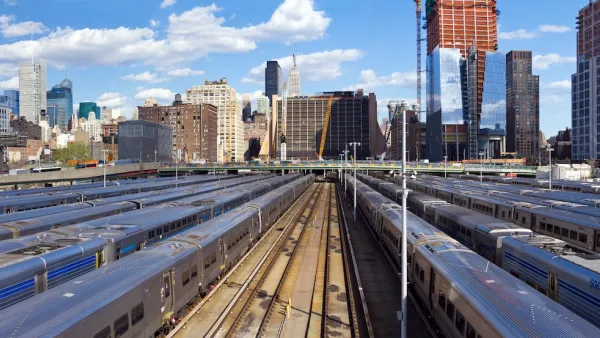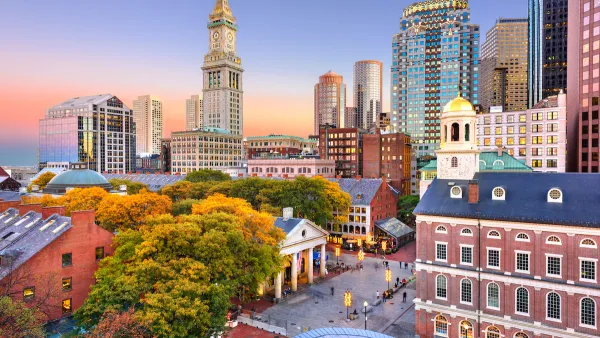A grassroots housing plan in Baltimore would keep control over neighborhood revitalization, and its benefits, in communities.

The "20/20 Vision for Fair Development" plan calls for the city to commit to an annual investment of $40 million. Half would go toward demolishing vacant and blighted properties; the other half would be a long-term investment in plans to rebuild permanently affordable housing through community land trusts.
Community land trusts, or CLTs, are nonprofits that establish communally owned property under a democratic governance structure. Baltimore Housing Roundtable, the coalition behind the proposal, says joint land ownership offers the possibility of neighborhood revitalization, and housing, without the risk of displacement:
"When these community controls are leveraged against market forces, neighborhoods can ensure a communally managed recycling of ownership, and avoid the frenzied churn of renters and developers commonly associated with boom-bust speculation and gentrification."
A city board recently took a different tack, approving a $600-million urban revitalization program from the governor that will incentivize new development on demolished properties.
"Project C.O.R.E." is the type of plan to which CLTs are proposed as an alternative. Advocates say the strategy of attracting private developers with little community accountability can be difficult to distinguish from an attempt to attract a new community to fill private developments. A January report from the Housing Roundtable reads:
"When significant numbers of people are constantly threatened with homelessness and the city can offer only trickle down development that, if successful, will further increase housing costs, the only reasonable conclusion is that involuntary displacement of a certain class of residents is a foreseeable part of the city’s plan and policy."
The Nation delves deeper into competing visions for Baltimore, and the possibilities for revitalization without gentrification.
FULL STORY: Can Neighborhoods Be Revitalized Without Gentrifying Them?

Analysis: Cybertruck Fatality Rate Far Exceeds That of Ford Pinto
The Tesla Cybertruck was recalled seven times last year.

National Parks Layoffs Will Cause Communities to Lose Billions
Thousands of essential park workers were laid off this week, just before the busy spring break season.

Retro-silient?: America’s First “Eco-burb,” The Woodlands Turns 50
A master-planned community north of Houston offers lessons on green infrastructure and resilient design, but falls short of its founder’s lofty affordability and walkability goals.

Test News Post 1
This is a summary

Analysis: Cybertruck Fatality Rate Far Exceeds That of Ford Pinto
The Tesla Cybertruck was recalled seven times last year.

Test News Headline 46
Test for the image on the front page.
Urban Design for Planners 1: Software Tools
This six-course series explores essential urban design concepts using open source software and equips planners with the tools they need to participate fully in the urban design process.
Planning for Universal Design
Learn the tools for implementing Universal Design in planning regulations.
EMC Planning Group, Inc.
Planetizen
Planetizen
Mpact (formerly Rail~Volution)
Great Falls Development Authority, Inc.
HUDs Office of Policy Development and Research
NYU Wagner Graduate School of Public Service




























